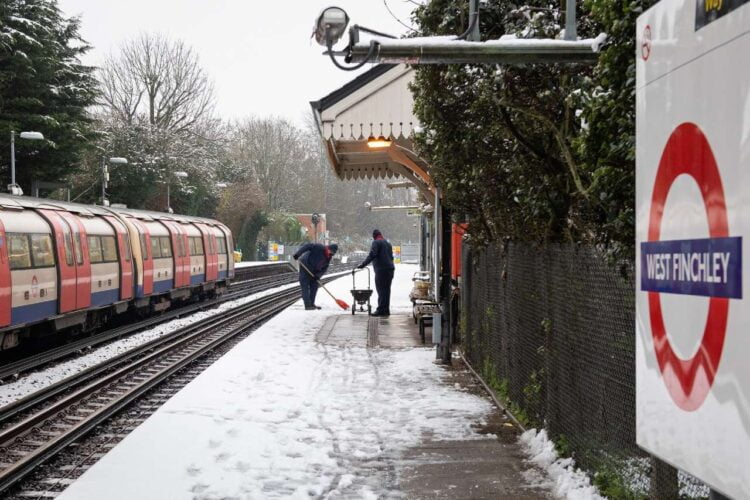TfL and boroughs keep London moving during severe winter weather
Transport for London[1] (TfL) and London[2] Councils are working together to keep the capital's transport running during this winter's severe weather conditions.
TfL workers are on duty night and day, working to implement measures to minimise disruption[3] on the Tube, bus, rail and road networks. However, London's transport body is advising Londoners and visitors to check before they travel and allow extra journey time.
The Meteorological Office has stated that it expects the coldest temperatures in fourteen years in the UK overnight tonight.
TfL, London Councils and emergency services have developed a joint strategy to keep transport infrastructure and services open. This includes roads, rail and river routes, roads and footways around bus garages, railway stations, hospitals and police, fire and ambulance stations across London.
London Underground's strategy includes running a large fleet of de-icing trains, and using thousands of heated rail points to keep rails as clear as possible. It also treats platforms to keep them safe for passengers.
TfL is keeping its rail network moving by using points heaters and de-icing rails, and gritting stations on the Docklands Light Railway (DLR), London Overground[4] and Elizabeth line[5].
TfL and the boroughs are using thousands of tons of salt to ensure that road users, including delivery drivers, pedestrians and cyclists, can get around London. A fleet of road gritters is operating across the capital to keep roads clear, and boroughs will share salt stores with each other if required.
Passengers can check before they travel by:
- using the TfL Go app
- consulting posters, leaflets and service information boards at Tube stations
- through the London Travel Info 24-hour telephone helpline on 0343 222 1234.
Wi-Fi is available at all Tube stations, most London Overground stations, all Elizabeth line stations within central London and Victoria Coach Station, which allow passengers to access the latest travel information for all modes of transport.
Glynn Barton, Chief Operating Officer at TfL, said: “We have done everything possible to ensure we have well-rehearsed procedures in place to minimise disruption to the network during freezing conditions. Our staff are working around the clock to help keep the rail and strategic road networks up and running, as well as ensuring that footways and cycling routes remain safe. I would urge customers and visitors to the capital to check before they travel during cold and icy weather, using the TfL Go app, our website or TfL social media channels.”
 London snow. West Finchley station, Northern Line. January 24, 2021 // Credit: TfL
London snow. West Finchley station, Northern Line. January 24, 2021 // Credit: TfL
Cllr Kieron Williams, Executive Member for Climate Change, Transport and Environment[6] at London Coundils – which represents all thirty-two boroughs and the City of London – said: “Boroughs are working flat out to ensure London's roads are safe for all users throughout the cold weather, having ensured there is enough salt available at key locations across the capital to deal with the challenge of frozen roads and pavements.
“Boroughs are responsible for 95 per cent of London's road network and our highways teams continue to monitor high-tech weather forecasts, ready to treat the roads and pavements with salt as soon as conditions demand it.
“We are focusing on gritting key areas around stations and bus stops, schools and hospitals, as well as listening to Londoners about other priorities such as pavements and cycle[7] routes.”
References
- ^ Posts tagged with Transport for London (www.railadvent.co.uk)
- ^ Posts tagged with London (www.railadvent.co.uk)
- ^ Posts tagged with Disruption (www.railadvent.co.uk)
- ^ Posts tagged with London Overground (www.railadvent.co.uk)
- ^ Posts tagged with Elizabeth Line (www.railadvent.co.uk)
- ^ Posts tagged with Environment (www.railadvent.co.uk)
- ^ Posts tagged with Cycle (www.railadvent.co.uk)